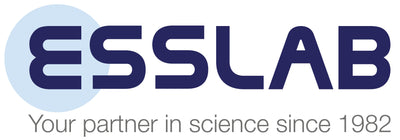EPA Standards Method 200.8 - ICP-MS
- Home
- EPA Standards Method 200.8 - ICP-MS
Specifications:
- ICP-MS method
- Applicable matrix: Ground waters, surface waters, drinking waters, and wastewaters
- Revisions: 4.5 and 5.4
What is EPA method 200.8?
Method 200.8 is a well-established method promulgated by the U.S. Environmental Protection Agency (EPA) for the analysis of ground waters, surface waters, drinking waters, and wastewaters by inductively coupled plasma mass spectrometry (ICP-MS).
This method is for analysis of 21 trace metal elements and can also be used for solid waste samples.
| 21 Trace Analytes Measured by EPA 200.8 | Matrix | ||
|---|---|---|---|
|
|
|
|
All standards manufactured by Inorganic Ventures use high-purity starting materials and are produced in accordance with our stringent Quality Assurance guidelines. Standards for Method 200.7 are designed for use with ICP-OES.
Further Information:
Drinking water quality is strictly regulated by the EPA regulatory standards under the Safe Drinking Water Act (SDWA). Among the more than 90 contaminants currently regulated, 17 of them are metals or metalloid. US EPA Methods 200.5 (ICP-OES), 200.7 (ICP-OES), 200.8 (ICP-MS), and 200.9 (GFAA) are all approved methods for metal element analysis.
In recent years, EPA Method 200.8 has increased in popularity because regulatory requirements in drinking water have become strict, requiring lower level detection. Because ICP-MS detection limits can be as low as ppt (pg/L)—1000-fold lower than ICP-OES—all of the most toxic metals in drinking water can be measured by ICP-MS using EPA Method 200.8 and meet the low ppb regulatory requirement.
EPA 200.8 is approved for use with drinking water, wastewater, ground water, and even solid samples (soil, sediment, and solid waste), despite the fact that EPA Method 6020 is a specifically approved method for the determination of trace elements in solid samples.
Although ICP-OES tolerates high matrix samples, there are times that the samples need to be diluted before analysis. Automated dilution systems can be coupled with ICP-OES to speed up the analysis process.
-
Use instruments capable of automation dilution and re-analysis
ICP-MS has much lower tolerance for high total dissolved solids (TDS) compared to ICP-OES. ICP-MS analysis on samples containing heavy matrices such as wastewater can therefore result in reduced internal standard recoveries. This requires the need to manually scan for results outside the acceptable recovery range, and then manually diluting and re-analyzing the sample. Instruments with automated dilution can improve productivity by automatically identifying outliers and subsequently performing dilution and re-analysis. This automation will speed up the entire process, especially in high throughput labs where a large number of samples are analyzed daily. -
Use instruments that reduce impact of high sample matrix
Regular maintenance to clean the sample introduction system—in particular sampler and skimmer cones—is necessary to reduce signal drifts and prevent plasma shutdown. If an instrument has an option to reduce the impact of high sample matrix, it will reduce the maintenance work load and increase uptime. For example, different skimmer cone inserts with different thickness can be chosen for different sample processing based on the balance of sensitivity and high matrix tolerance. -
Make sure your plasma cones are easy to clean
Even in instruments with a low maintenance design, it is still necessary to clean plasma cones. It is always preferable to have an instrument with plasma cones that are easy to clean and does not require a special service call.
EPA Method 6020B and EPA Method 200.8
US EPA Method 6020B, finalized in 2014 with Update V, measures 21 metal elements. The major difference between EPA Method 200.8 and EPA Method 6020B is that the mineral elements such as sodium, potassium, iron, magnesium, and calcium are not included in EPA Method 200.8 but are included in EPA Method 6020B. However, the biggest difference is the use of these two methods. As described above, EPA Method 200.8 is strictly used for regulatory monitoring of drinking water and wastewater, while EPA Method 6020B is a performance-based method that can include additional elements if the performance is demonstrated. The method is for guidance, not for compliance testing. Although EPA Method 6020B does not mention collision cell technology, it is acceptable to use the technology.
-
WHAT ARE YOU LOOKING FOR?Search
- Login / Register
- Reference Materials
- Liquid Handling
- Chromatography and Spectroscopy
- Testing
- Labware
- Resources
- Wishlist (0)
- Compare (0)
- Contact Us




